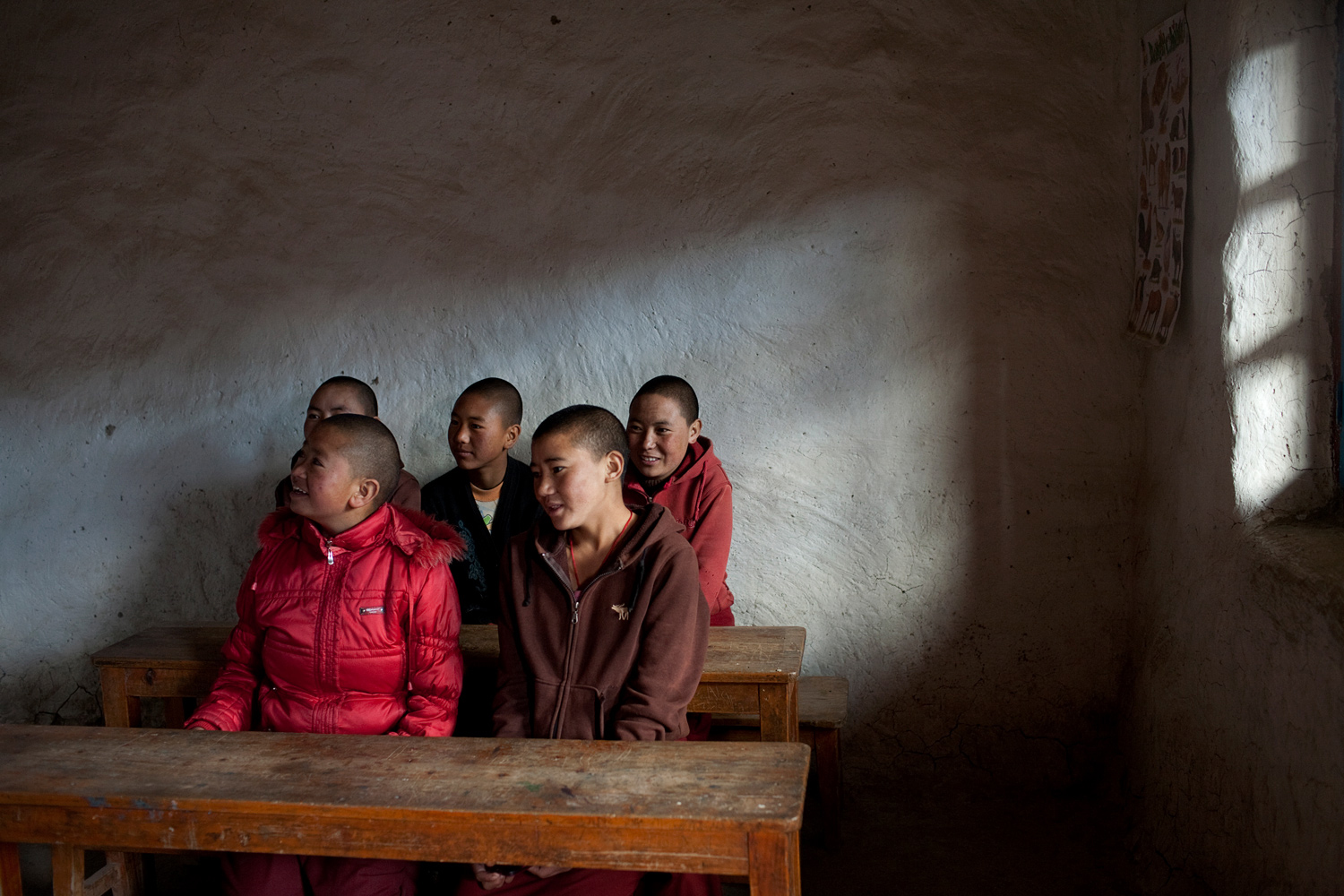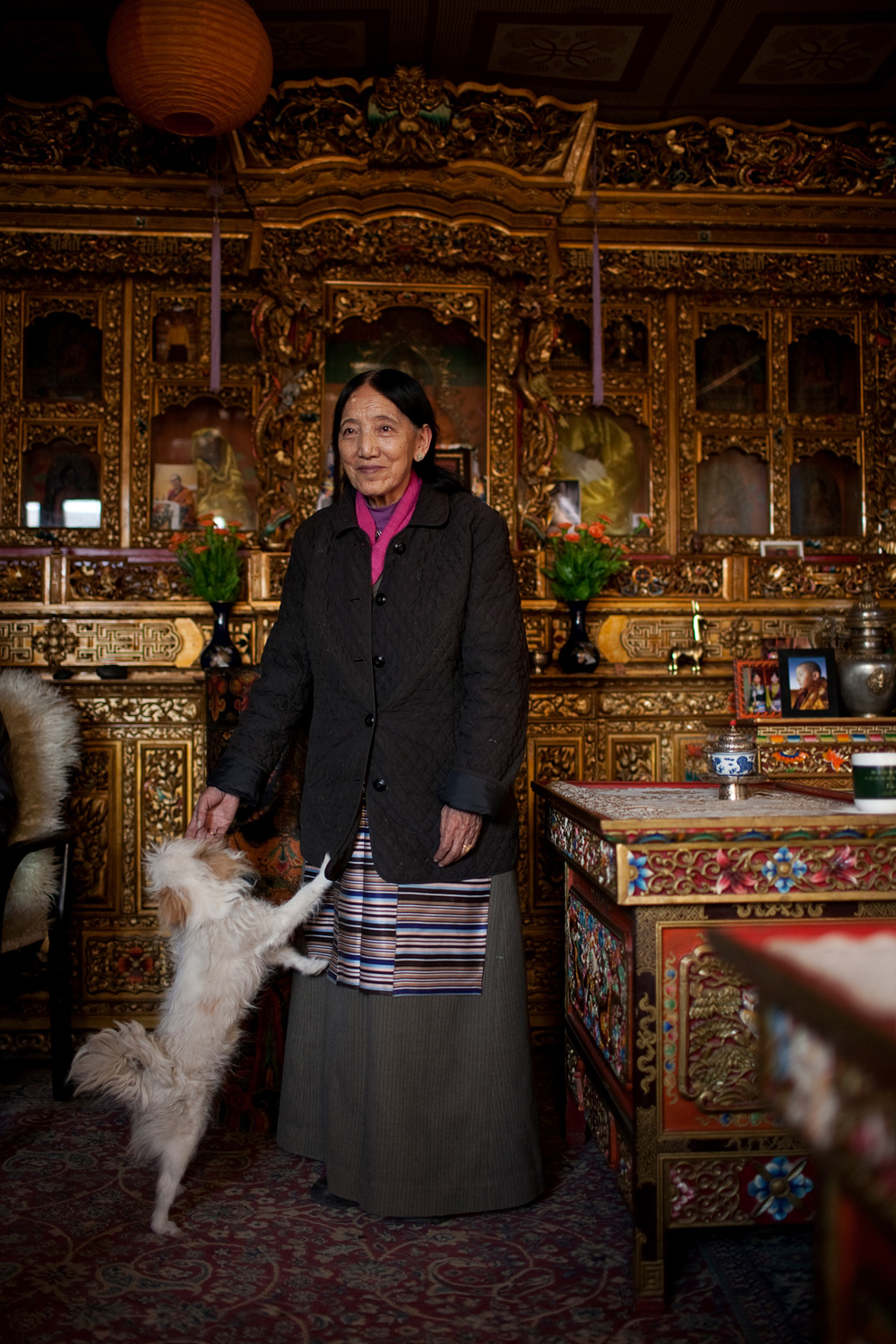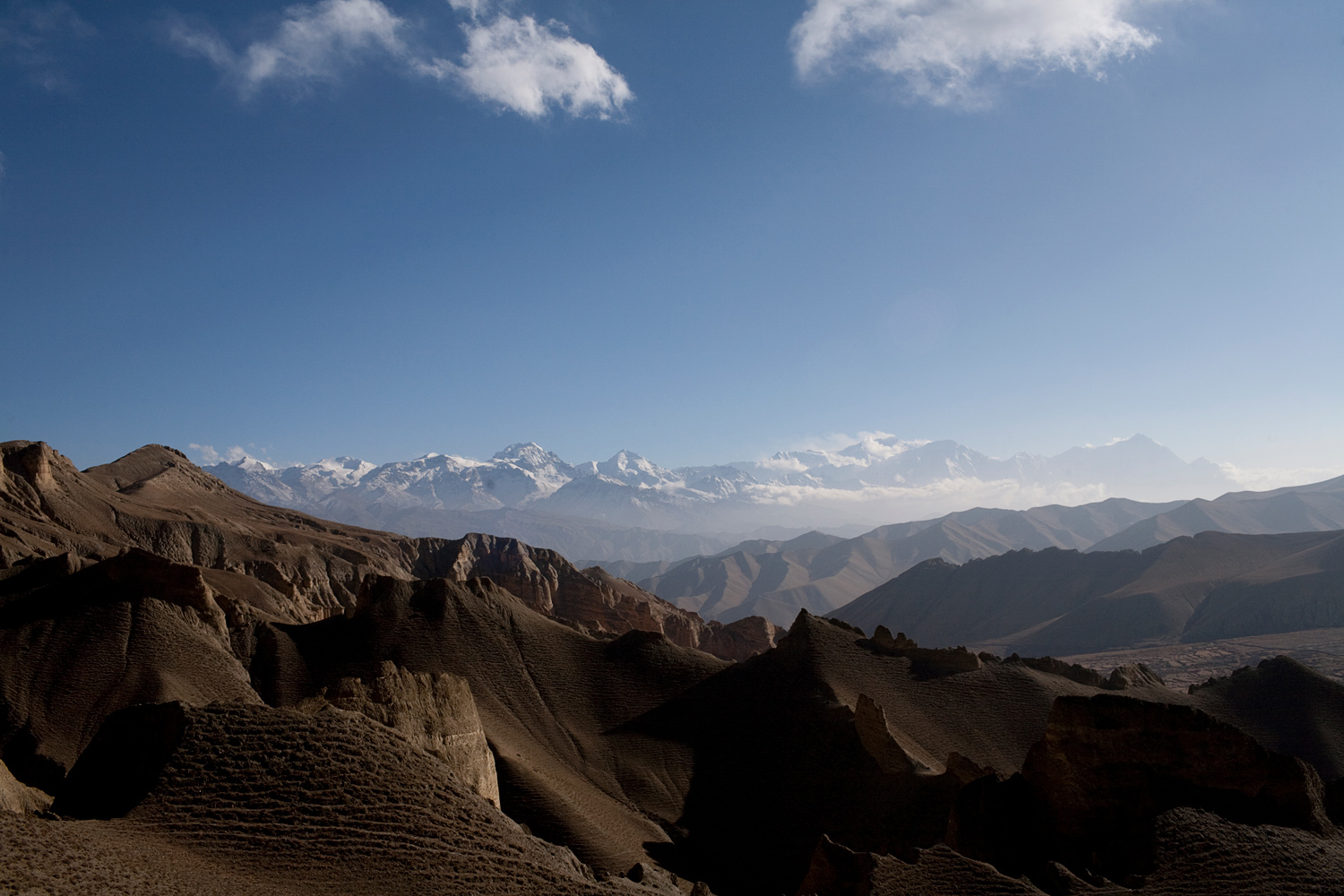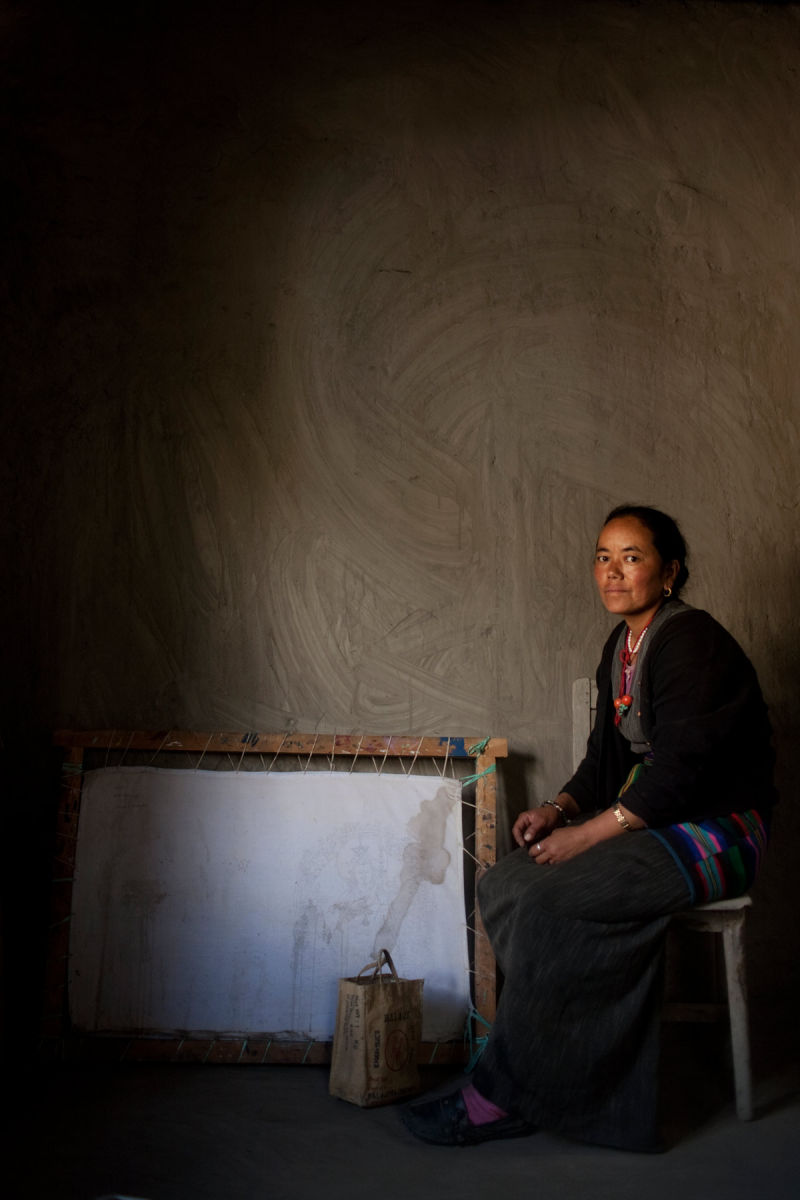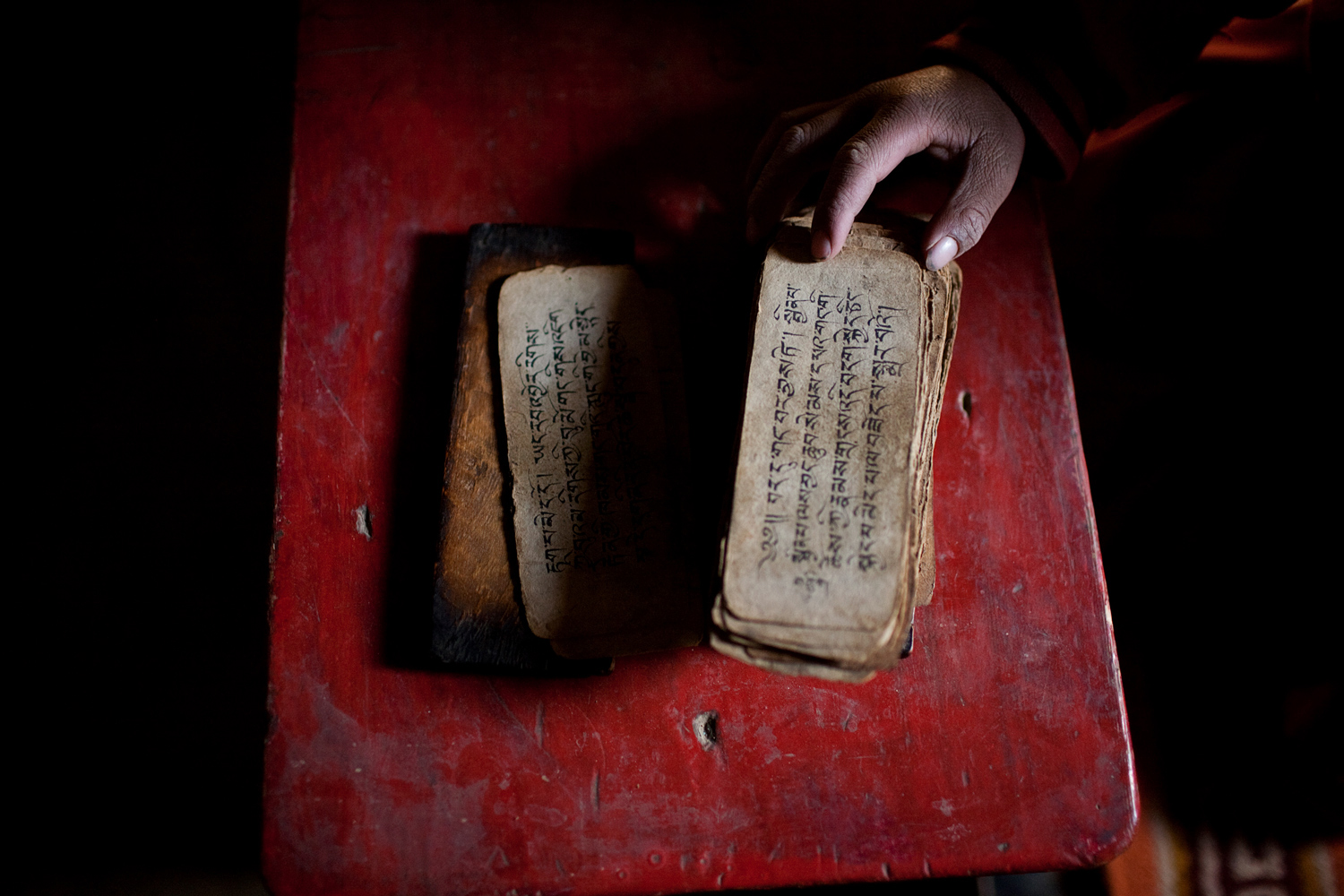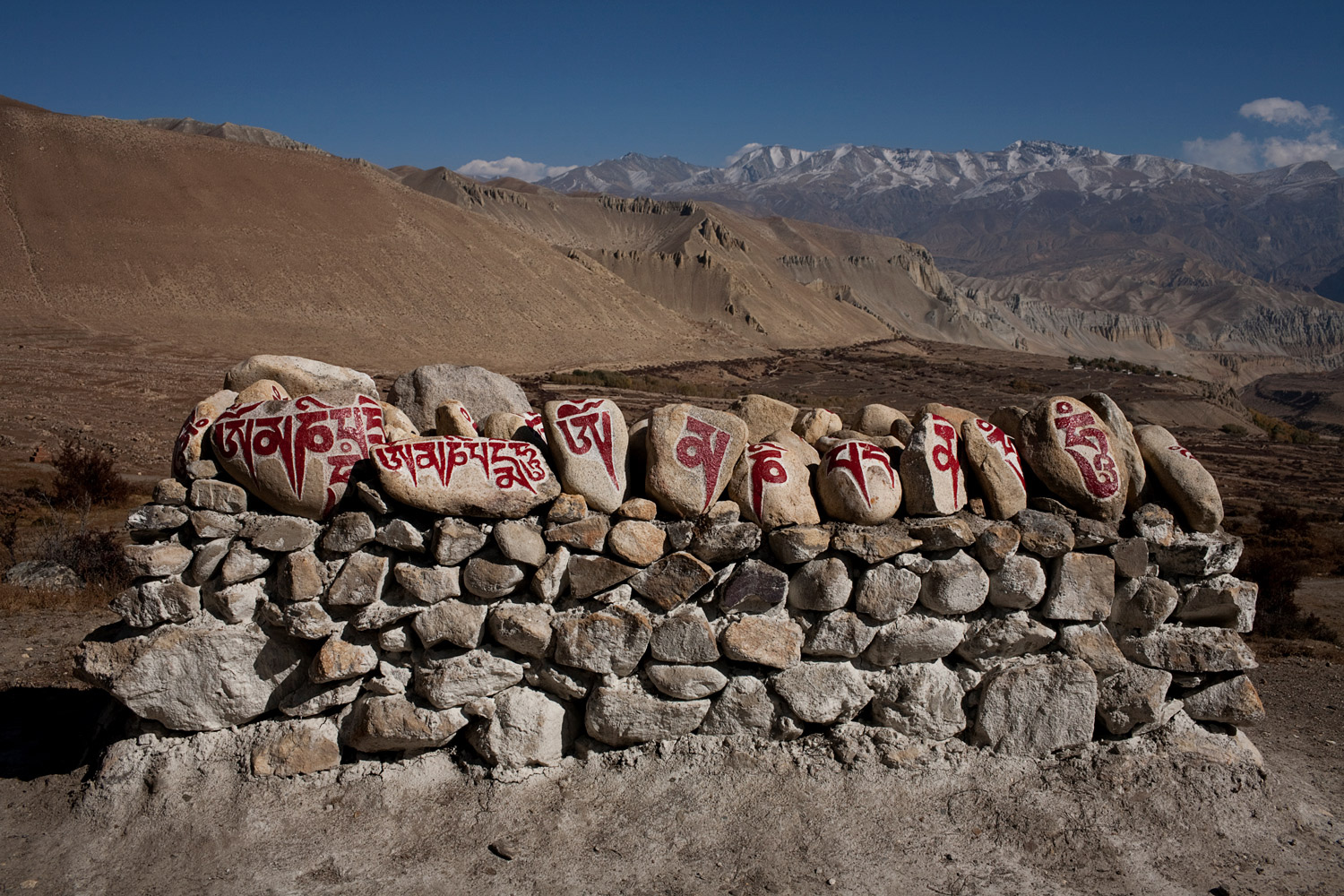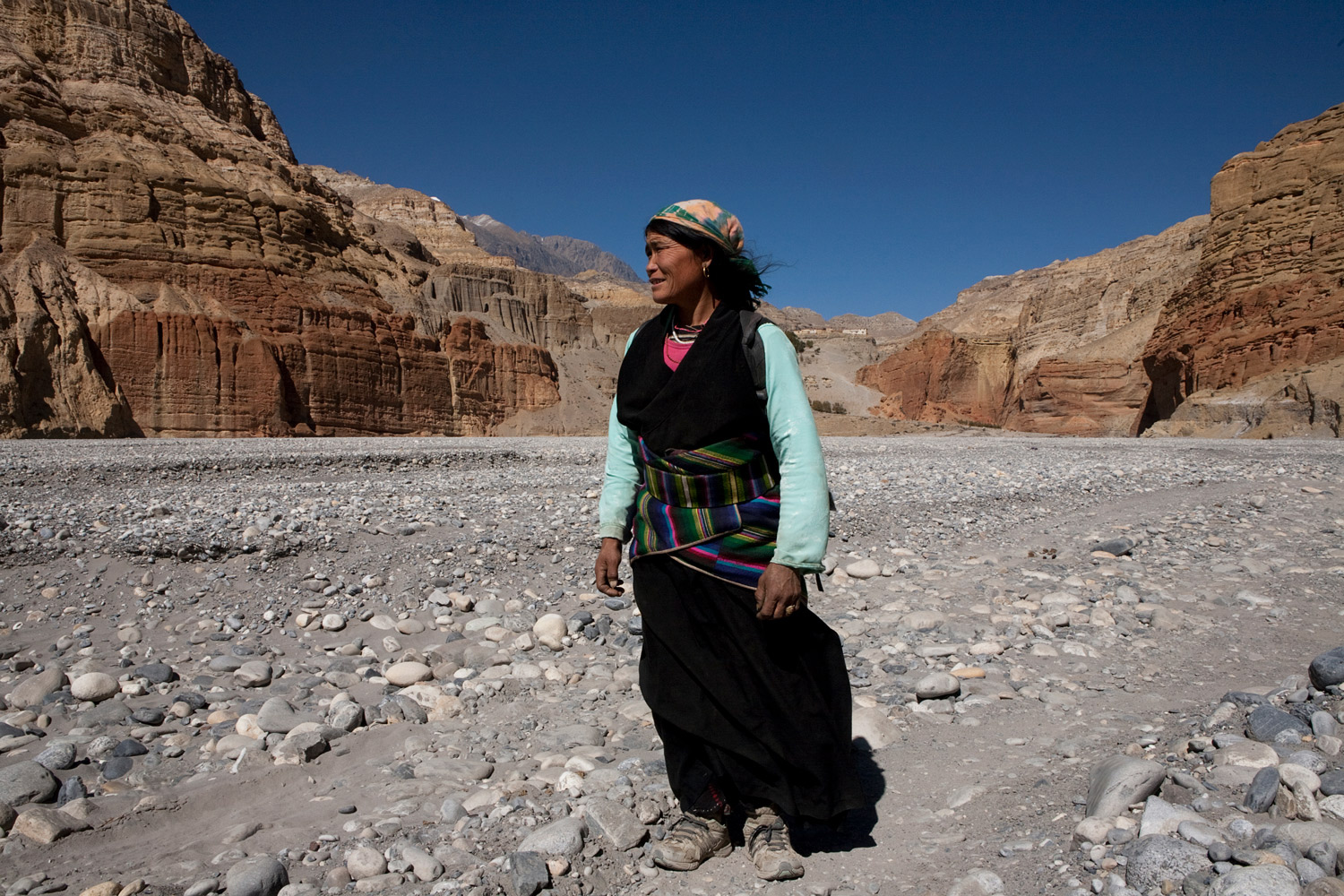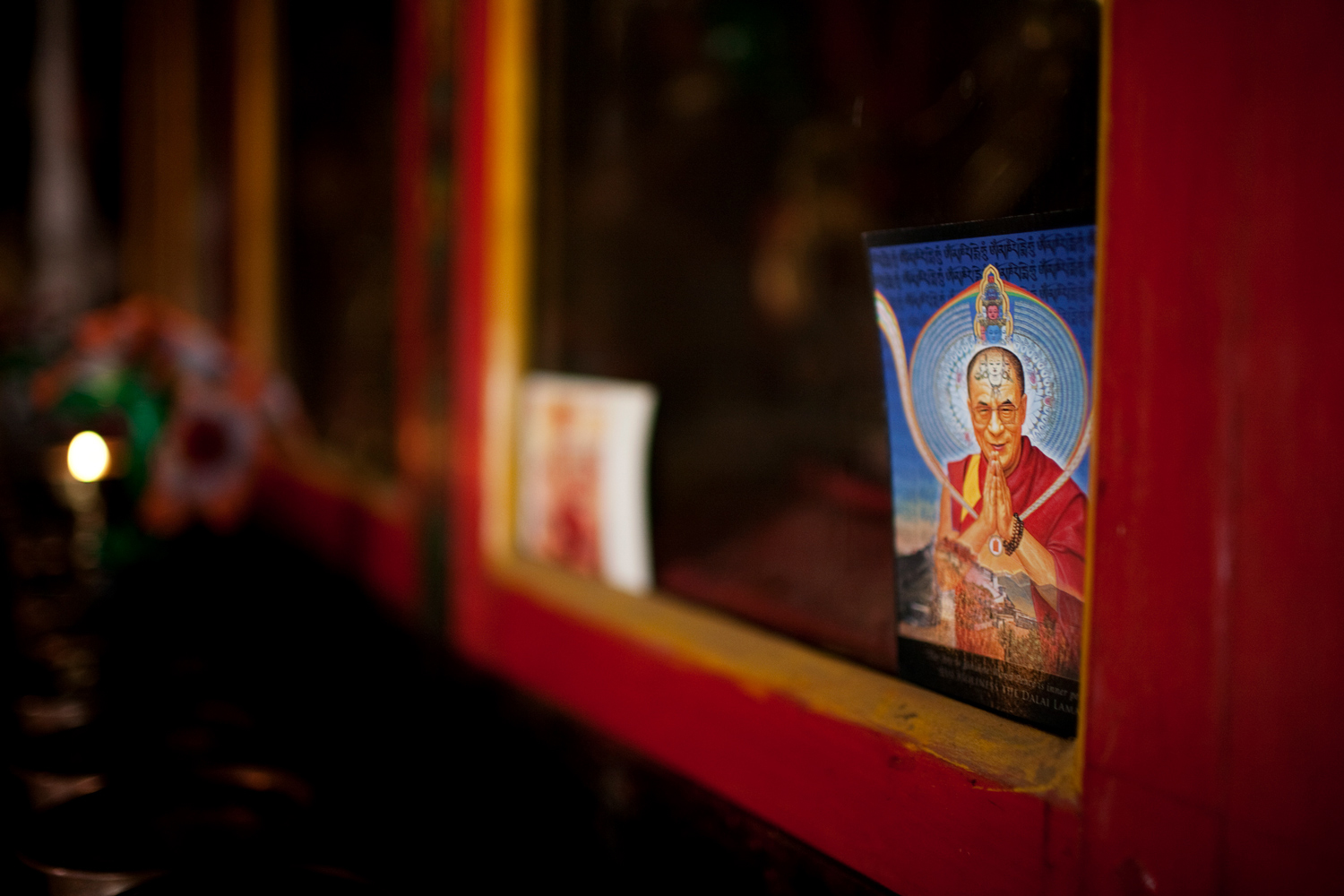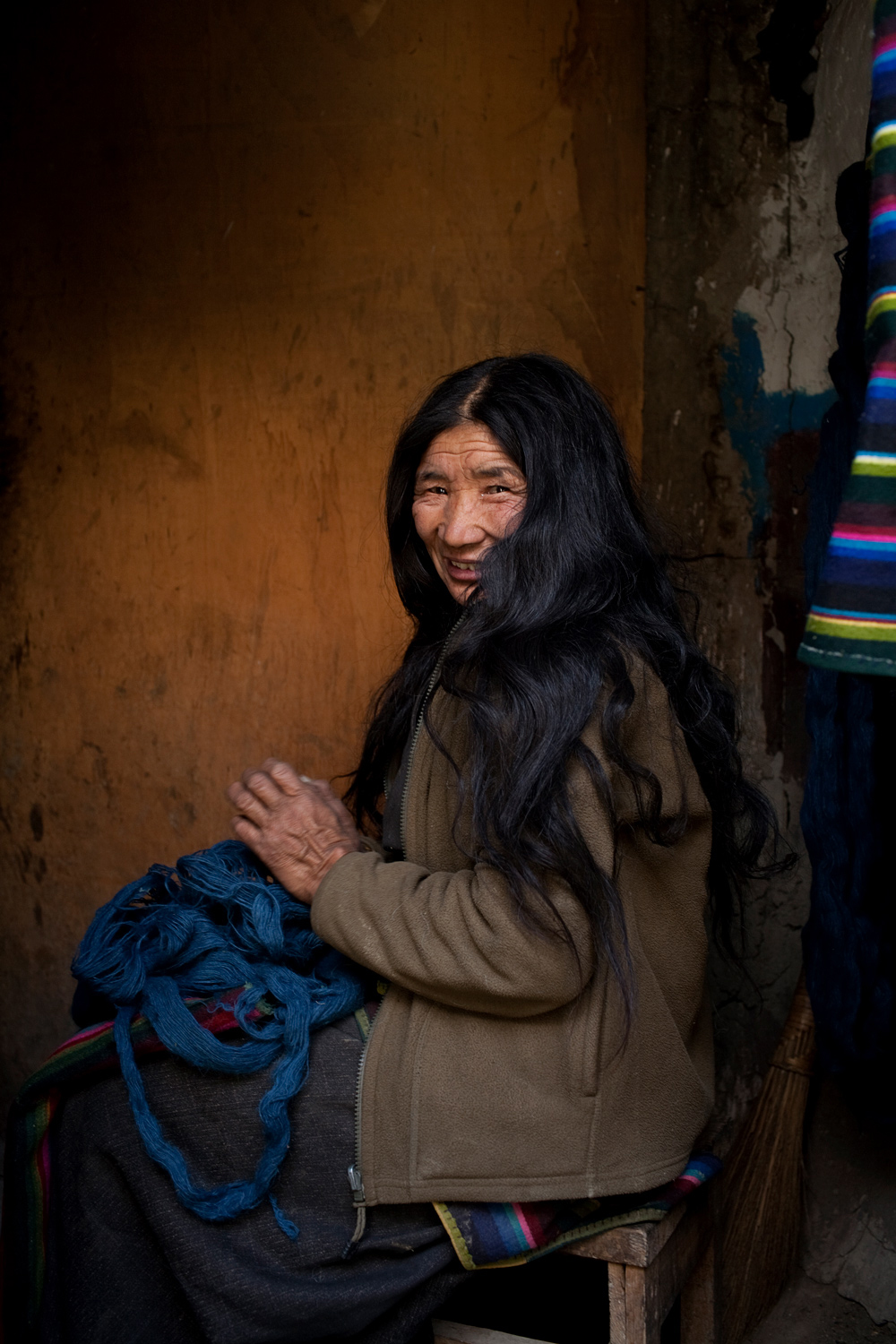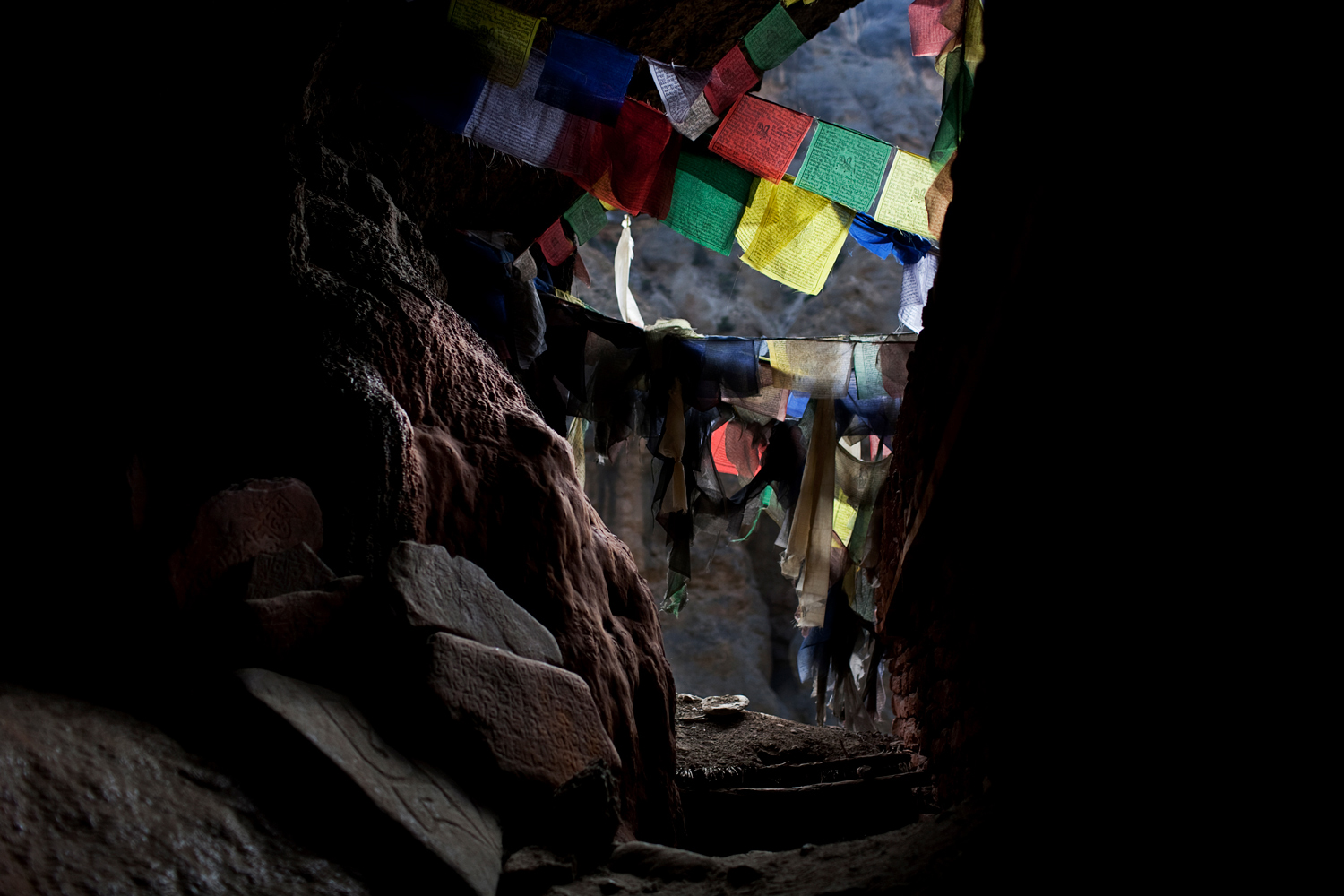Choser monastery is one of the most important temples that are visited every year along with the Choser caves in the Upper Mustang region.
A group of tibetan nuns attend literacy classes at the Nunnery Monastery in Tsarang. To become a nun you need to first cut your hair and learn from respected gurus about Buddhism as well as not do any harmful things to others. When they are not school they usually perform pujas at people's houses under request.
A group of tibetan nuns practice a puja, a religious act that include bowing, making offerings and chanting, at the Tsarang Nunnery. They live regular lives and get to spend time with their families.
The Queen of Mustang,her excellency Sidrol Bista, 78, a high born Tibetan, poses for a photograph at the Royal Palace in the capital Lo Manthang.
According to the Dalai Lama, the Upper Mustang kingdom "is one of the few places in the Himalayan region that has been able to retain its traditional Tibetan culture unmolested". A view of the Tibetan Plateau around the area of Ghami.
Thara, 40, is one of the few female thanka painters in the Upper Mustang region. A thanka is a Tibetan silk painting with embroidery, usually depicting a Buddhist deity. Mrs Thara is learning that skill for when she gets older and explained that when you complete a thanka properly means that you are a good religious follower, while if you don't it means the opposite. It took her approximately one month to finish her first thanka, working 6 hours a day. Thara is a single woman and owns a hotel in Kagbeni.
A young tibetan monk,Sandup, 8 years old shows some of the praying cards at Choser Monastery. His family send him to the monastery because he is the second born son, an old Tibetan ancient custom that is still on practice.
A young tibetan monk , Sandup, 8 years old, takes care of visitors at Choser's Monastery and caves. His family send him to the monastery because he is the second born son, an old Tibetan ancient custom that is still on practice.
A mani wall stands at the entrance of the oldest monastery of Nepal, Chung Gompa.The Mani-stones are a Tibetan phenomena where mantras are carved into stones and piled up to form entire walls.
Mina Kumari walks from Jara to Jomsom as migrations started to take place as winter arrived in Upper Mustang.
A stupa or chorten stands in front of newly built Samar's monastery. It is considered to be sinful and inauspicious to cross a stupa from the anti-clockwise direction.
A young tibetan monk, Sandup, 7 years old shows the Choser caves to visitors daily. His family send him to the monastery because he is the second born son, an old Tibetan ancient custom that is still on practice.
Dr. Amchi Gyatso Bista performs a puja, an ancient religious ritual, at his home and also Lo-Kunphen Mentsi Khang School for tibetan medicine in Lo Manthang. He is the doctor of the Royal family and also teaches traditional medicine. He has seen an increase in the number of female students in the recent years.
Simi Wambo, 51, sews traditional tibetan clothes for woman in Tsarang village in order to preserve their culture. She has 2 sons and one of them is a monk in India.
Sunchok, 75, sews traditional clothes for woman in Kagbeni village after she was abandoned by her only son after her divorce. She has been weaving for 20 years for both survival and to keep the traditional culture alive.
An image of Amitabha-Boudha is on one of the walls of Dragkar-Thegchen Ling Gonpa Monastery in Lo Manthang. The image has been cleaned by a group of restorers that work under the supervision of the American Himalayan Foundation.
Many prayer flags decorate a cave on the way to Samar village in the Upper Mustang region. It is believed that the special blessing power of the mantras printed on them is spread all over the world by the wind.




